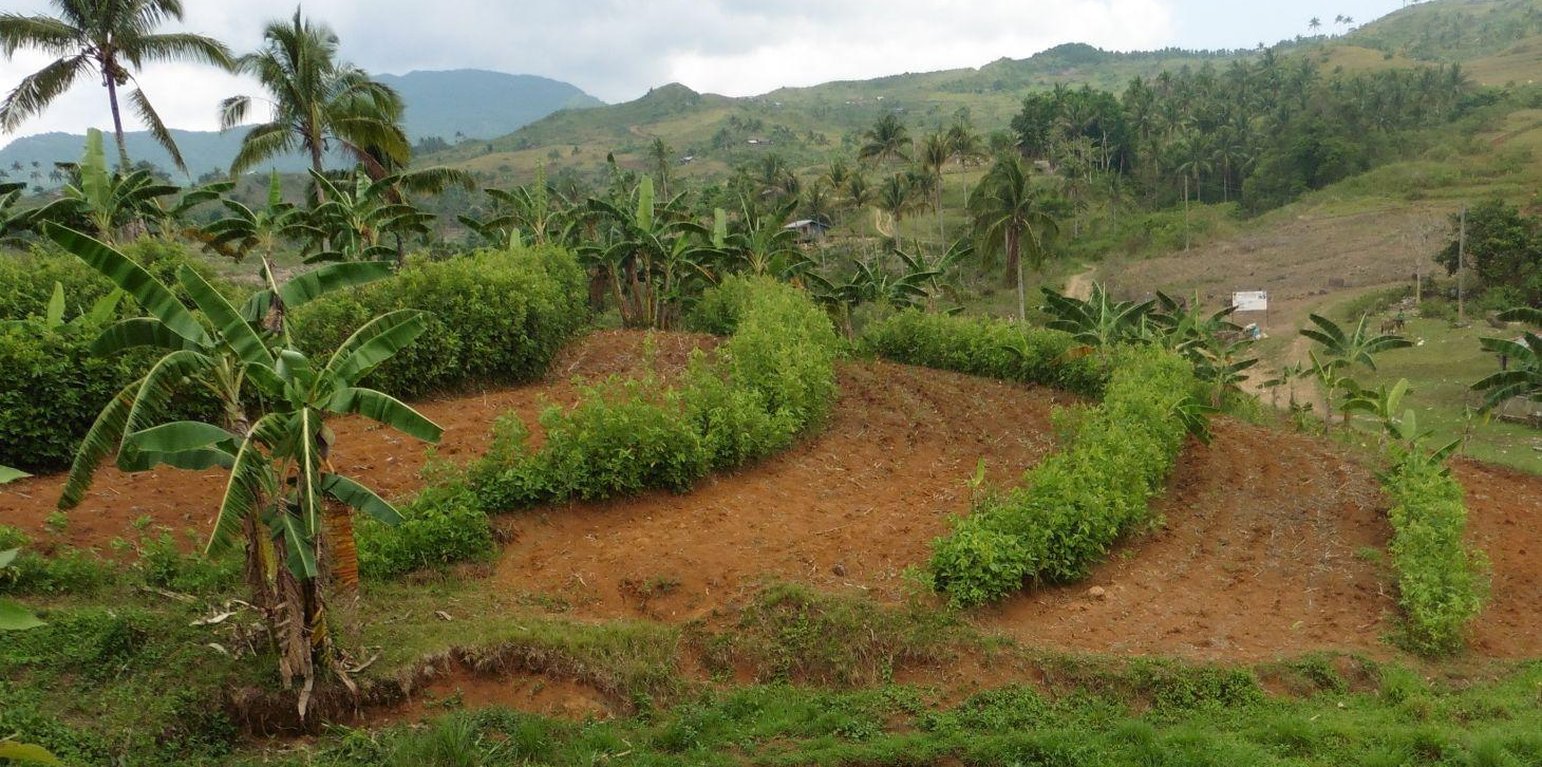Conservation Farming Village
(Filipinas)
Descripción
A modality in mobilizing resources for sustainable upland development which utilizes a basket of strategies, technologies, and interventions to catalyze the widespread transformation of traditional upland farming systems into resilient and sustainable upland production systems.
The objectives of Conservation Farming Village (CFV) are the following: to enhance farmers' adoption of sloping land management technologies through Science and Technology-based farming; to capacitate key groups and stakeholders in the community to better manage fragile upland resources; to conduct sustainability exercises to ensure sustainability of upland community development; to establish linkages among research-extension agencies and organizations for capacity building; and to provide support systems for the conservation farming communities.
The methods involved in the approach include capacitating upland farmers for sustainable development; strong Local Government Unit (LGU) support system; and establishing collaborative linkages and partnership as a tool for an enhanced support system.
The project of CFV in La Libertad, Negros Oriental was initiated in 2009. The first stage in the implementation of the approach is program orientation followed by community profiling. Then, Community Organizing or People's Organization strengthening. After that, technical trainings, barangay development council and municipal development council meetings were conducted to capacitate the farmers. Farm establishment was done through 'bayanihan' or group volunteerism, and lastly, farmers were encouraged to participate in the CFV.
The National Program Coordinating Office, Philippine Council for Agriculture, Aquatic and Natural Resources Research and Development (PCAARRD) and academic institutions (University of the Philippines Los Baños, Silliman University) provided technical support in the conceptualization and implementation of CFV. The LGU of La Libertad conducted the following : (1) capacity building for farmer volunteers and adopters; (2) assist in the establishment of science and technology-based conservation model farms; (3) incorporate CFV activities in the LGU Annual Investment Plan; and (4) provision of livelihood and support mechanisms to farmers.The implementation of the CFV project became a focal point of convergence of relevant and related activities being undertaken in the upland communities of La Libertad by Non-Government Organizations (NGOs), Government Offices (GOs) and other institutions.Through this approach, the farmers have made linkage with other service providers that enhanced the farmers' access to examine other technology options, livelihood opportunities, credit and financing source, and others that may help the farmers.
Lugar
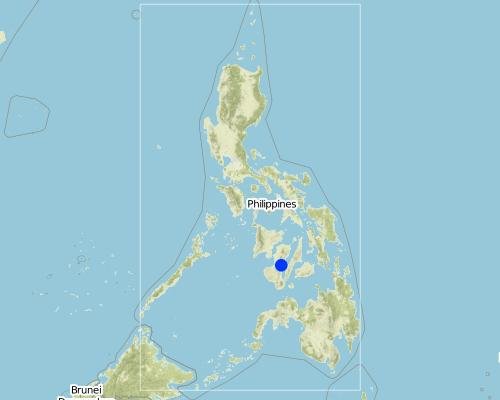
Lugar: La Libertad, Negros Oriental, Filipinas
Georreferencia de sitios seleccionados
Dato de inicio: 2009
Año de conclusión: n.d.
Tipo de Enfoque
-
tradicional/ local
-
iniciativa local reciente/ innovadora
-
proyecto/ basado en un programa
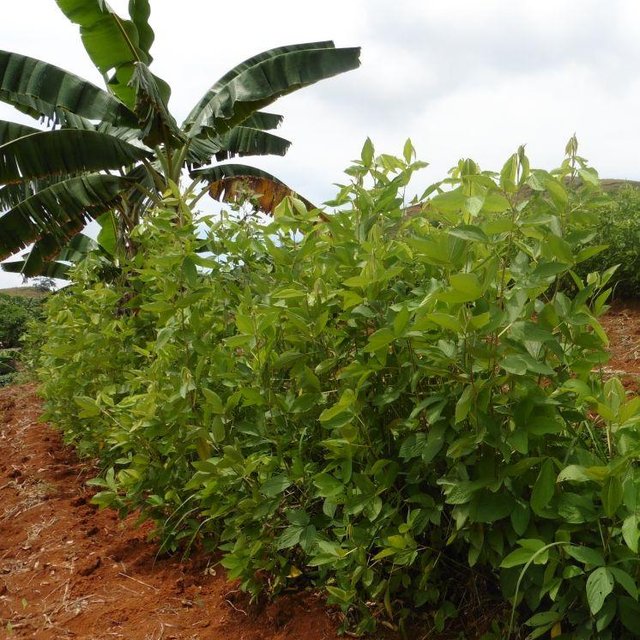
Flemengia and banana planted as hedgerows. (Engr. Djolly Ma. P. Dinamling, Bureau of Soils and Water Management)
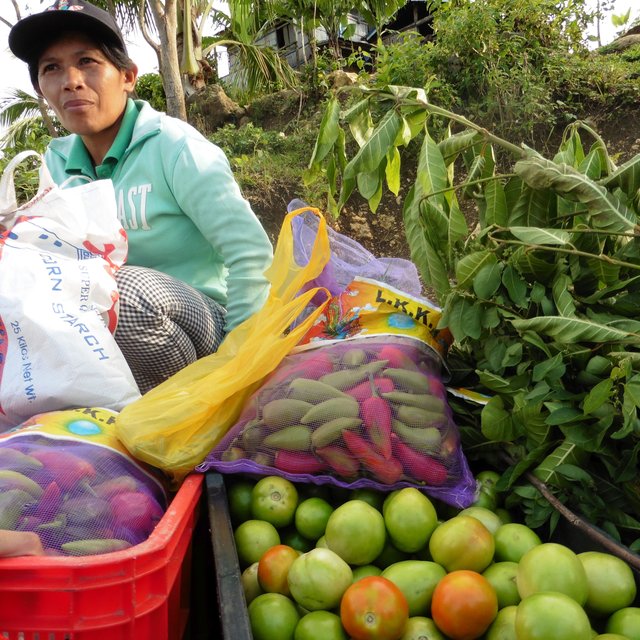
An upland farmer of CFV delivering the harvested crops in the market (Engr. Djolly Ma. P. Dinamling (Bureau of Soils and Water Management))
Metas del Enfoque y entorno facilitador
Propósitos/ objetivos principales del Enfoque
The CFV addresses the development, application, and validation of integrated farming systems in which holistic technology transfer and emphasis on sustainable development dimensions - environmental, economic, social - are the major driving forces for economic and environmental security.
Condiciones que facilitan la implementación de la/s Tecnología/s aplicadas bajo el Enfoque
-
Normas y valores sociales/ culturales/ religiosos: Selection of farmer volunteers to be included in the CFV program and establishment of model farms. Government executives were invited to participate in farmers' field day in remote upland villages to show to the farmers their intention to support the program.
-
Disponibilidad/ acceso a recursos y servicios financieros : Incorporation of the CFV program in the Annual Investment Plan (AIP) of the LGU of La Libertad, Negros Oriental
-
Entorno institucional: Farmers' organizations were organized and strengthened by mobilizing the 'Dagyaw Team' or Volunteers Group for the establishment of CFV model farms.
-
Conocimiento de MST, acceso a apoyo técnico: Provided series of technical training on the concepts and practices in CFV to the Barangay Development Councils (BDCs), Farmer Association, Municipal Development Councils (MDCs) and other stakeholders to enhance awareness on land degradation in the uplands and other environmental issues.
Condiciones que impiden la implementación de la/s Tecnología/s aplicadas bajo el Enfoque
Participación y roles de las partes interesadas involucradas
Partes interesadas involucradas en el Enfoque y sus roles
| ¿Qué partes interesadas/ entidades implementadoras estuvieron involucradas en el Enfoque? |
Especifique las partes interesadas |
Describa los roles de las partes interesadas |
| usuarios locales de tierras/ comunidades locales |
Land user from the upland barangay |
|
| especialistas MST/consejeros agrícolas |
LGU of La Libertad |
|
Agencia líder
Local land users
Involucramiento de los usuarios locales de tierras/ comunidades locales en las distintas fases del Enfoque
ninguno
pasivo
apoyo externo
interactivo
auto-movilización
iniciación/ motivación
Ten model farms were selected from CFV barangays.
planificación
Participation in meetings, sharing inputs.
implementación
Model farm establishment and maintenance, Farmer volunteers serve as local extension agents to fellow farmers.
monitoreo y evaluación
Participation in consultation meetings, farm record keeping.
Flujograma
Organizational structure in the implementation of CFV
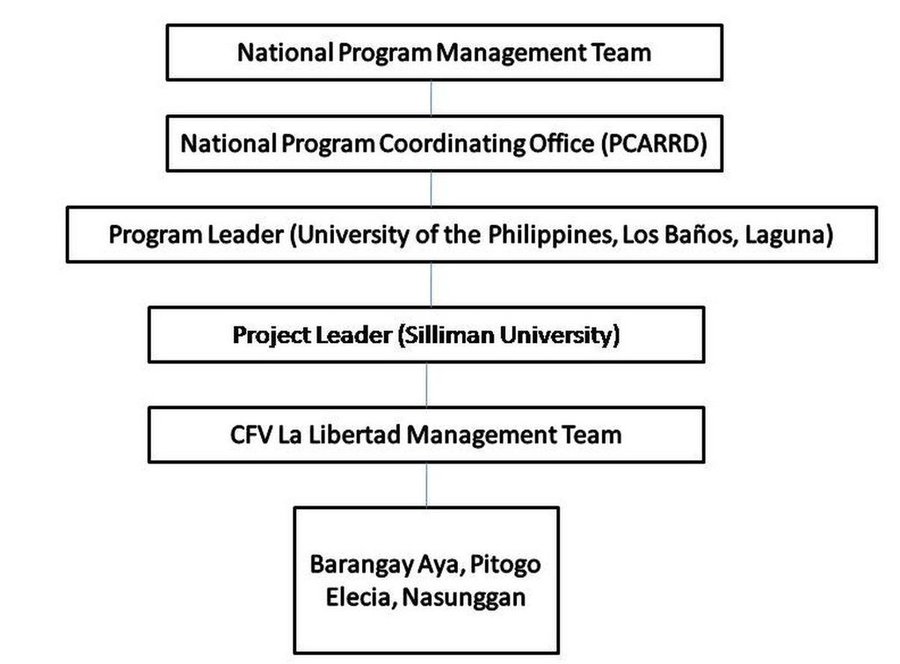
Autor: Dr. Rex Victor O. Cruz, University of the Philippines, Los Baños
La toma de decisiones en la selección de Tecnología MST
Las decisiones fueron tomadas por
-
solamente usuarios de tierras (autoiniciativa)
-
principalmente usuarios de tierras con el apoyo de especialistas MST
-
todos los actores relevantes, como parte de un enfoque participativo
-
principalmente por especialistas MST en consulta con usuarios de tierras
-
solo por especialistas MST
-
por políticos/ líderes
La toma de decisiones se basa en
-
la evaluación de conocimiento MST bien documentado (la toma de decisiones se basa en evidencia)
-
hallazgos de investigaciones
-
la experiencia personal y opiniones (no documentadas)
Apoyo técnico, fortalecimiento institucional y gestión del conocimiento
Las siguientes actividades o servicios fueron parte del enfoque
-
Construcción de capacidades / capacitación
-
Servicio de asesoría
-
Fortalecimiento institucional (desarrollo institucional)
-
Monitoreo y evaluación
-
Investigación
Construcción de capacidades/ capacitación
Se proporcionó capacitación a las siguientes partes interesadas
-
usuarios de tierras
-
personal de campo/ consejeros
Forma de capacitación
-
en el contexto de trabajo
-
de agricultor a agricultor
-
áreas de demostración
-
reuniones públicas
-
cursos
Temas avanzados
Conservation Farming, Sloping Land Management, Agroforestry, Climate Change , Organic Farming/Fertilizer Production, measuring rainfall and soil erosion. Trainers' training were conducted to capacitate the implementer.
Fortalecimiento institucional
Se fortalecieron/ establecieron instituciones
-
no
-
sí, un poco
-
sí, moderadamente
-
sí, mucho
Describa la institución, los roles y las responsabilidades, miembros, etc.
Tipo de apoyo
-
financiero
-
construcción de capacidades/ entrenamiento
-
equipo
Detalles adicionales
Monitoreo y evaluación
Investigación
La investigación trató los siguientes temas
-
sociología
-
economía/ marketing
-
ecología
-
tecnología
Researches were conducted by PCAARRD and UPLB to evaluate the approach and technologies introduced in the area. Land users were also taught about climatic data collection such as rainfall and farm record keeping that could be used in evaluating the impacts.
Financiamiento y apoyo material externo
Presupuesto anual en dólares americanos para el componente MST
-
< 2,000
-
2,000-10,000
-
10,000-100,000
-
100,000-1,000,000
-
> 1,000,000
Precise annual budget: n.d.
PCAARRD and UPLB 30%, LGU of La Libertad 70%
Los siguientes servicios o incentivos fueron proporcionados a los usuarios de las tierras
-
Apoyo financiero/material proporcionado a los usuarios de tierras
-
Subsidios para insumos específicos
-
Crédito
-
Otros incentivos o instrumentos
Apoyo financiero/material proporcionado a los usuarios de tierras
parcialmente financiado
totalmente financiado
equipo: herramientas
shovel, mattock, sickle and bolo
agrícola: semillas
vegetable & forage seeds, coffee & cacao seedlings
El trabajo de los usuarios de las tierras fue
-
voluntario?
-
comida por trabajo?
-
pagado en efectivo?
-
recompensado con otro tipo de apoyo material?
Análisis de impacto y comentarios de conclusión
Impactos del Enfoque
No
Sí, un poco
Sí, moderadamente
Sí, mucho
¿El Enfoque ayudó a los usuarios de tierras a implementar y mantener Tecnologías MST?
Soil and water conservation measures were introduced to the land users such as contour hedgerows of legumes that contribute in improving the quality of the soil and lessen soil erosion.
¿El Enfoque empoderó a grupos en desventaja social y económica?
The approach involved the upland farmers in the establishment of science and technology based farms. 80-90% of the farmer-volunteers and adaptors perceived that CFV led to an increase in their crop and farm yield resulting in increased income.
¿El Enfoque mejoró cuestiones de tenencia de tierra/ derechos de usuarios que obstaculizaron la implementación de la Tecnologías MST?
¿El Enfoque resultó en mejor seguridad alimentaria/ mejoró la nutrición?
Increase in per capita income of CFV farmer-volunteers from Php 7,973.00 in 2004 to Php 16,745.42 in 2013, representing 47.6% increase.
Did other land users / projects adopt the Approach?
Eight barangays with fifteen model farms adopted the CFV approach in La Libertad, Negros Oriental. The program was also replicated by other neighboring municipality.
Motivación principal del usuario de la tierra para implementar MST
-
producción incrementada
-
incremento de la renta(bilidad), proporción mejorada de costo-beneficio
-
reducción de la degradación de la tierra
-
reducción del riesgo de desastres naturales
-
carga de trabajo reducida
-
pagos/ subsidios
-
reglas y reglamentos (multas)/ aplicación
-
prestigio, presión social/ cohesión social
-
afiliación al movimiento/ proyecto/ grupo/ redes
-
conciencia medioambiental
-
costumbres y creencias, moral
-
conocimiento y capacidades mejorados de MST
-
mejoramiento estético
-
mitigación de conflicto
-
Trainings and study tours (Lakbay-Aral)
Sostenibilidad de las actividades del Enfoque
¿Pueden los usuarios de tierras sostener lo que se implementó mediante el Enfoque (sin apoyo externo)?
The land users were capacitated by the LGU through trainings, cross visits so that they can manage their farms and to share the knowledge with neighboring farmers.
Conclusiones y lecciones aprendidas
Fortalezas: perspectiva del usuario de tierras
-
Marketing support system with the establishment of barangay trading post in the CFV sites,support for the operations of the two livestock auction markets at two barangays, transport of farm products from CFV sites to Poblacion in time for the market day every Thursday and linkage with OURFOOD Program (AFOS) based in Cebu City for the marketing of organically-grown high value crops.
Fortalezas: punto de vista del compilador o de otra persona recurso clave
-
Strong LGU support wherein they are the forefront for the present and the future of the CFV programs or any development program.They are the only permanent local institution that could deliver services and support to development initiatives.
Debilidades/ desventajas/ riesgos: perspectiva del usuario de tierrascómo sobreponerse
Debilidades/ desventajas/ riesgos: punto de vista del compilador o de otra persona recurso clavecómo sobreponerse
-
No clear zoning and proper delineation for the CFV and reforestation areas.
There should be a clear zoning through policy and ordinance by the national and local government to sustain and preserve the CFV sites.
Referencias
Compilador
-
Philippine Overview of Conservation Approaches and Technologies
Fecha de la implementación: 20 de marzo de 2017
Últimas actualización: 5 de abril de 2017
Personas de referencia
-
Philippine Overview of Conservation Approaches and Technologies (philcatsecretariat@gmail.com) - Especialista MST
-
Dr. Rex Victor O. Cruz (rexcruz@yahoo.com) - Especialista MST
Descripción completa en la base de datos de WOCAT
La documentación fue facilitada por
Institución
- Department of Agriculture-Region VIII (DA-8) - Filipinas
- Farming Systems and Soil Resources Institute, University of the Philippines Los (Farming Systems and Soil Resources Institute, University of the Philippines Los) - Filipinas
- Municipality of La Libertad, Negros Oriental, Philippines (Municipality of La Libertad) - Filipinas
- Silliman University, Dumaguete, Philippines (Silliman University) - Filipinas
Proyecto
- Decision Support for Mainstreaming and Scaling out Sustainable Land Management (GEF-FAO / DS-SLM)
